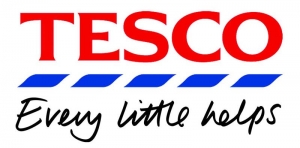Planeta, the largest editorial group in Spain, launched the online venture ‘casadellibro.com’ in 2001, mainly motivated by the Internet frenzy and growth expectations of the moment. The obvious reality of the market at the beginning of 2002 forced the management to face a huge downsizing and cost reduction. The main problem was to decide whether they should look for a new and inexpensive technological platform or stick to the initial one, with high maintenance costs. What seemed to be a simple decision about which platform to use became a decision about the future of the firm, confronting financial, technological or cultural factors among others.
What they had…
Sun machines/4 servers/2 CPUs each/Solaris (Unix) operating system/Oracle 8i (database manager running in cluster)/Vignette 5.6 (content manager to support e-commerce)/Excalibur v5.3 (search engine).
For higher availability, a firewall and a load balancer were also included.
What they were planning to get…
Microsoft Windows NT/HP servers/SQL Server (database)/Microsoft Commerce Server 2000 (e-commerce manager).
The development and maintenance costs would be substantially lower in this case.
In today’s IT business environment, the most important criteria to use when comparing the two operating systems/IT platforms are:
- Hardware support: With the cost of hardware continually falling, an operating system must take the best advantage of the leading hardware from a wide range of suppliers and take advantage of compatible hardware enhancements that are offered by third-party companies.
- Internet services: The way that a company deploys and manages its Internet presence affects how customers and clients perceive the company. Access times, availability, and the ability to easily deploy and build feature-rich sites are all critical components of a company’s Internet presence. The operating system should provide a comprehensive foundation for Internet-enabled services.
- Reliability: Companies on the Internet, must be available 24 hours a day, seven days a week. To support this, the operating system must provide maximum reliability and availability through both software-level services and hardware support.
- Manageability: With servers distributed over multiple networks and locations, administrators need tools that enable them to centrally manage their servers and provide comprehensive management and support services to their users.
- Development and deployment: Reducing the time to market for applications and services is vital. Having a coherent environment where applications can be easily developed and deployed with a minimum of effort is as important as the reliability of the target platform.
In the given scenario, Planeta’s short-term goal was to reduce cost and get their balance sheets in shape. The old system had higher installation cost (which would be a partially sunk-cost if the system was done away with). It had a very high maintenance cost. The licensing costs depended on the packaging (that is, the applications deployed) and were on the higher side. The scalability was fairly high.
The new system would have lower installation costs. The maintenance cost was very low. Licencing could be obtained and renewed in groups of software/hardware. Scalability, however, would be lower, considering the Microsoft technology of the time. This rollout seemed to be more in line with the long-term operational (and hence, financial) goals of casadellibro.com. The scalability issue could be handled by augmenting the services with additional servers without changing the basic architecture.
Transaction volumes would not be as high as that of a bank, so reliability would be, but not a major, factor in this case. Microsoft Technologies would be able to handle it. Upgrading is a part-and-parcel of IT-businesses. Hence, the new system would be more relevant in terms of ease of deployment, backward-compatibility and licensing.
Casadellibro.com should have embraced the Microsoft technology considering the above criteria.


